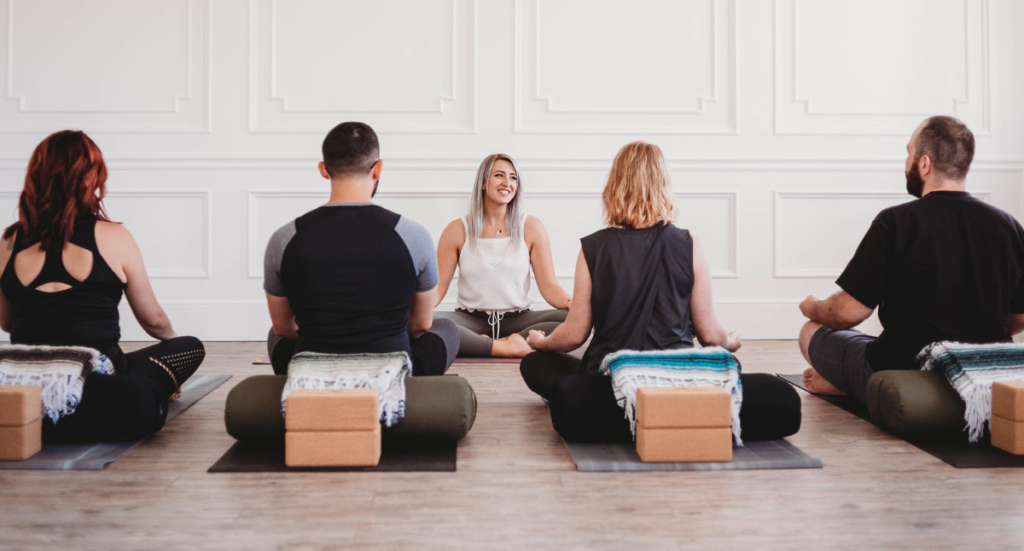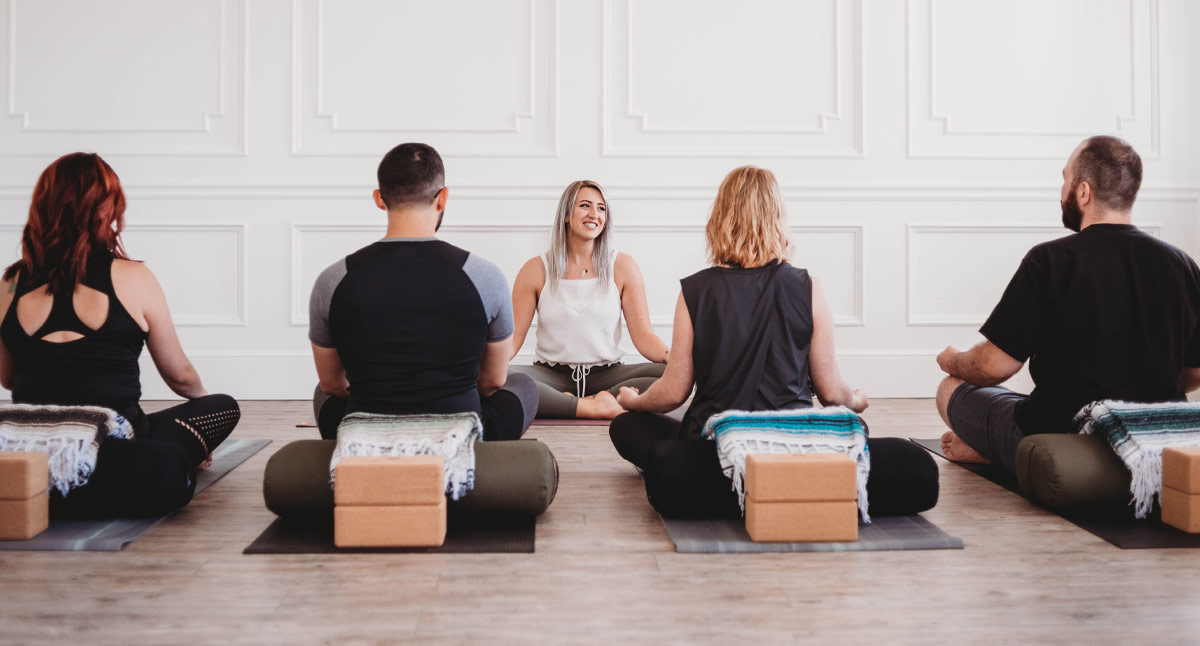This entry was posted on Feb 6, 2024 by Charlotte Bell.

My authentic yoga “parentage” was within the Iyengar system. Recognized for its precision, and for inventing the yoga props we use at present, the Iyengar system gives a superb basis. In workshops, academics—together with BKS Iyengar and his daughter, Geeta, each of whom I studied with in 1989—supplied alignment cues about as quick as you can course of them, and typically quicker. As a hypermobile particular person, I usually flopped into flexibility-focused asanas with out a lot thought as to how I used to be working towards them. Iyengar-based yoga cues helped me refine my apply, in order that I wasn’t merely persevering with my unhealthy alignment habits.
However typically, after I’d attend conventional Iyengar workshops, I’d depart with an agitated nervous system. I’m guessing it is because the pace with which alignment cues have been being disseminated made it tough for me to combine all of them. There merely wasn’t time for me to course of them, really feel them in my physique and make changes based mostly on what my very own physique was telling me. After which there was the truth that many academics “barked” out yoga cues, quite than sharing them. This methodology of educating typically made me really feel pressured to carry out, and typically put me on edge.
I’ve since branched out to review with a number of different grasp academics, most notably Donna Farhi and Judith Hanson Lasater. Each studied within the Iyengar system a long time in the past and have since cast their very own paths. Each nonetheless think about wholesome alignment to be essential, however their concepts about alignment, and the way in which they convey them, are totally totally different from their Iyengar coaching.
Simplifying Yoga Cues
Each Donna and Judith construct their courses round a number of ideas and permit time for particular person exploration. This fashion of presenting data is simpler, a minimum of for me. It’s a strategy I’ve adopted in my very own educating. It’s because I imagine that our personal expertise in our apply is finally our greatest trainer. Giving college students time—and silence—to probe for themselves provides college students extra company. It provides them the power to determine what’s greatest for their very own our bodies and minds at a given time. In spite of everything, I can’t probably know what’s greatest for one more particular person.
A Few Concepts for Simplifying Your Cues
This checklist is in no way exhaustive. I’m positive that individuals studying this may have concepts of their very own that may assist academics cue extra successfully. Listed here are a number of ways in which have labored for me:
- Establish an anatomical focus to your class. This may be something—no matter is alive for you on the time. For instance, you can manage a category round alignment for a specific space of the physique, say, the pelvis or the shoulders. Then remind college students to provide consideration to what they’re feeling in these areas as you progress by means of your sequence. Spending a whole apply on consciousness of a specific space of the physique provides college students extra time to combine—and keep in mind!—what they’ve discovered.
- Cue college students on the best way to transfer into poses, after which allow them to marinate of their expertise. My Iyengar coaching taught me the significance of cueing college students as they transfer into their asanas. I discover it efficient to cue alignment whereas they’re coming into a pose. After that, I would make a number of strategies for the place they could wish to direct their consciousness, however I additionally give ample time for silence whereas their our bodies unfold into every asana.
I’d love to listen to from you—academics and college students—what you discover useful in both designing or receiving yoga cues.
About Charlotte Bell
Charlotte Bell found yoga in 1982 and commenced educating in 1986. Charlotte is the writer of Aware Yoga, Aware Life: A Information for On a regular basis Observe and Yoga for Meditators, each printed by Rodmell Press. Her third e book is titled Hip-Wholesome Asana: The Yoga Practitioner’s Information to Defending the Hips and Avoiding SI Joint Ache (Shambhala Publications). She writes a month-to-month column for CATALYST Journal and serves as editor for Yoga U On-line. Charlotte is a founding board member for GreenTREE Yoga, a non-profit that brings yoga to underserved populations. A lifelong musician, Charlotte performs oboe and English horn within the Salt Lake Symphony and people sextet Crimson Rock Rondo, whose DVD gained two Emmy awards in 2010.


